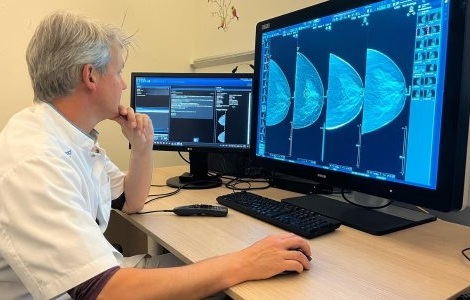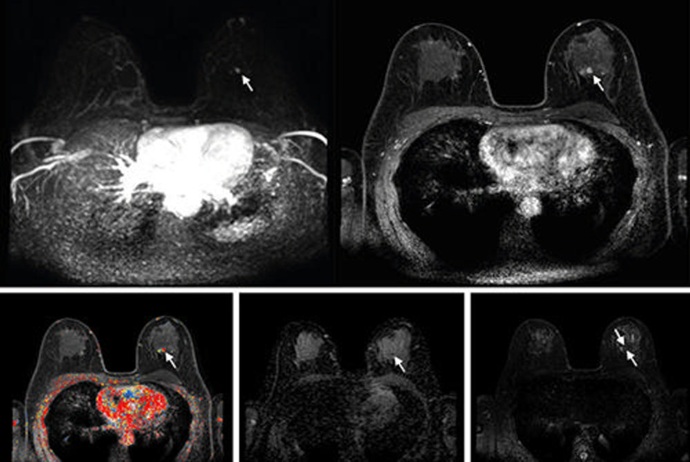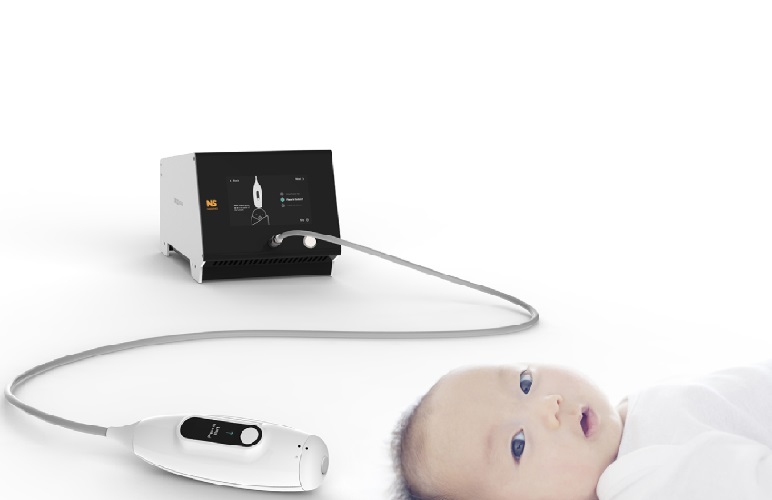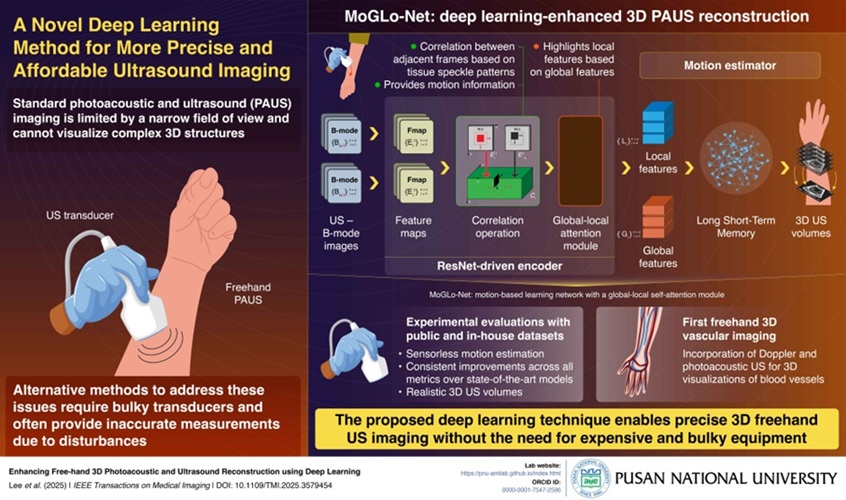High-Resolution PET/CT Assesses Brain Stem Function
|
By MedImaging International staff writers Posted on 13 Apr 2020 |
Positron emission tomography/computed tomography (PET/CT) imaging of the inferior colliculus (IC) can help evaluate cochlear implant sustainability in patients with hearing impairment, claims a new study.
Researchers at the University of Freiburg Medical Center (IMS; Germany) conducted a study in 13 patients with asymmetric hearing loss, who underwent 18F-FDG PET/CT imaging. The scans were reviewed by two experienced readers who examined regional glucose metabolism in the IC and the primary auditory cortex (PAC), which is known to undergo metabolic changes following external acoustical input and transformation to neuronal signals from the cochlea hair cells to the auditory nerve fibers.
The readers rated glucose metabolism as none, mild, moderate, or strong asymmetry to the left or to the right for IC and PAC separately, and determined the effect of the duration of hearing impairment. The results showed that regional glucose metabolism of both the IC and PAC was significantly reduced on the contralateral side of the poorer-hearing ear, as compared to the ipsilateral side. Longer duration of hearing impairment was also associated with a higher metabolism on the contralateral PAC. Duration of hearing impairment did not predict regional glucose metabolism for the ipsilateral PAC or either side of the IC. The study was published in the March 2020 issue of The Journal of Nuclear Medicine.
“Previous studies suggest that the association between longer duration of hearing impairment and higher glucose metabolism indicates cortical reorganization. In bilateral deaf patients this has been shown to lessen the benefits of cochlear implants,” said lead author Iva Speck, MD. “Prediction of a successful cochlear implant outcome might benefit from improved imaging with fully digital PET/CT systems, as large parts of the auditory system, including small brain nuclei such as the IC, can be assessed for preoperative patient characterization.”
In a normal ear, sound vibrations in the air lead to resonant vibrations of the basilar membrane inside the cochlea. The movement of hair cells, located all along the basilar membrane, creates an electrical disturbance that can be picked up by the surrounding nerve cells, allowing the brain to interpret the nerve activity and determine what sound frequency is being heard. The cochlear implant bypasses the hair cells and stimulates the cochlear nerves directly using electrical impulses. This allows the brain to interpret the frequency of sound as it would if the hair cells of the basilar membrane were functioning properly.
Related Links:
University of Freiburg Medical Center
Researchers at the University of Freiburg Medical Center (IMS; Germany) conducted a study in 13 patients with asymmetric hearing loss, who underwent 18F-FDG PET/CT imaging. The scans were reviewed by two experienced readers who examined regional glucose metabolism in the IC and the primary auditory cortex (PAC), which is known to undergo metabolic changes following external acoustical input and transformation to neuronal signals from the cochlea hair cells to the auditory nerve fibers.
The readers rated glucose metabolism as none, mild, moderate, or strong asymmetry to the left or to the right for IC and PAC separately, and determined the effect of the duration of hearing impairment. The results showed that regional glucose metabolism of both the IC and PAC was significantly reduced on the contralateral side of the poorer-hearing ear, as compared to the ipsilateral side. Longer duration of hearing impairment was also associated with a higher metabolism on the contralateral PAC. Duration of hearing impairment did not predict regional glucose metabolism for the ipsilateral PAC or either side of the IC. The study was published in the March 2020 issue of The Journal of Nuclear Medicine.
“Previous studies suggest that the association between longer duration of hearing impairment and higher glucose metabolism indicates cortical reorganization. In bilateral deaf patients this has been shown to lessen the benefits of cochlear implants,” said lead author Iva Speck, MD. “Prediction of a successful cochlear implant outcome might benefit from improved imaging with fully digital PET/CT systems, as large parts of the auditory system, including small brain nuclei such as the IC, can be assessed for preoperative patient characterization.”
In a normal ear, sound vibrations in the air lead to resonant vibrations of the basilar membrane inside the cochlea. The movement of hair cells, located all along the basilar membrane, creates an electrical disturbance that can be picked up by the surrounding nerve cells, allowing the brain to interpret the nerve activity and determine what sound frequency is being heard. The cochlear implant bypasses the hair cells and stimulates the cochlear nerves directly using electrical impulses. This allows the brain to interpret the frequency of sound as it would if the hair cells of the basilar membrane were functioning properly.
Related Links:
University of Freiburg Medical Center
Latest General/Advanced Imaging News
- New Ultrasmall, Light-Sensitive Nanoparticles Could Serve as Contrast Agents
- AI Algorithm Accurately Predicts Pancreatic Cancer Metastasis Using Routine CT Images
- Cutting-Edge Angio-CT Solution Offers New Therapeutic Possibilities
- Extending CT Imaging Detects Hidden Blood Clots in Stroke Patients
- Groundbreaking AI Model Accurately Segments Liver Tumors from CT Scans
- New CT-Based Indicator Helps Predict Life-Threatening Postpartum Bleeding Cases
- CT Colonography Beats Stool DNA Testing for Colon Cancer Screening
- First-Of-Its-Kind Wearable Device Offers Revolutionary Alternative to CT Scans
- AI-Based CT Scan Analysis Predicts Early-Stage Kidney Damage Due to Cancer Treatments
- CT-Based Deep Learning-Driven Tool to Enhance Liver Cancer Diagnosis
- AI-Powered Imaging System Improves Lung Cancer Diagnosis
- AI Model Significantly Enhances Low-Dose CT Capabilities
- Ultra-Low Dose CT Aids Pneumonia Diagnosis in Immunocompromised Patients
- AI Reduces CT Lung Cancer Screening Workload by Almost 80%
- Cutting-Edge Technology Combines Light and Sound for Real-Time Stroke Monitoring
- AI System Detects Subtle Changes in Series of Medical Images Over Time
Channels
Radiography
view channel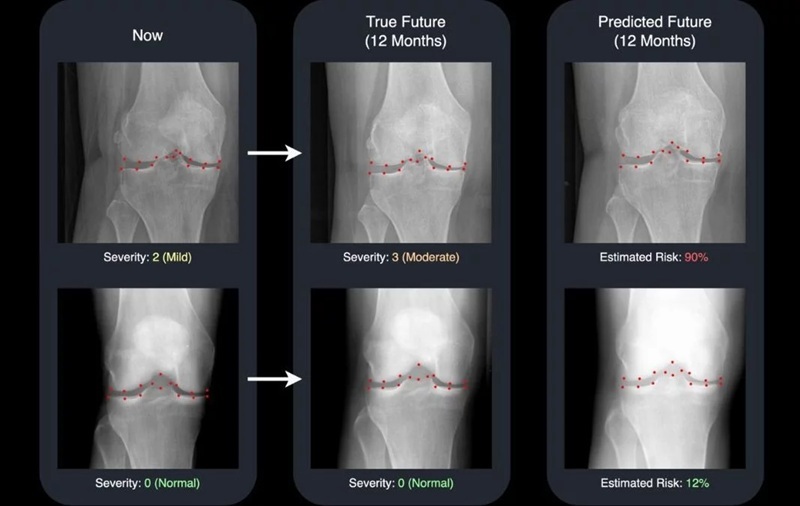
AI Generates Future Knee X-Rays to Predict Osteoarthritis Progression Risk
Osteoarthritis, a degenerative joint disease affecting over 500 million people worldwide, is the leading cause of disability among older adults. Current diagnostic tools allow doctors to assess damage... Read more
AI Algorithm Uses Mammograms to Accurately Predict Cardiovascular Risk in Women
Cardiovascular disease remains the leading cause of death in women worldwide, responsible for about nine million deaths annually. Despite this burden, symptoms and risk factors are often under-recognized... Read moreMRI
view channel
AI-Assisted Model Enhances MRI Heart Scans
A cardiac MRI can reveal critical information about the heart’s function and any abnormalities, but traditional scans take 30 to 90 minutes and often suffer from poor image quality due to patient movement.... Read more
AI Model Outperforms Doctors at Identifying Patients Most At-Risk of Cardiac Arrest
Hypertrophic cardiomyopathy is one of the most common inherited heart conditions and a leading cause of sudden cardiac death in young individuals and athletes. While many patients live normal lives, some... Read moreUltrasound
view channel
Ultrasound Probe Images Entire Organ in 4D
Disorders of blood microcirculation can have devastating effects, contributing to heart failure, kidney failure, and chronic diseases. However, existing imaging technologies cannot visualize the full network... Read more
Disposable Ultrasound Patch Performs Better Than Existing Devices
Wearable ultrasound devices are widely used in diagnostics, rehabilitation monitoring, and telemedicine, yet most existing models rely on lead-based piezoelectric ceramics that pose health and environmental risks.... Read moreNuclear Medicine
view channel
New Imaging Solution Improves Survival for Patients with Recurring Prostate Cancer
Detecting recurrent prostate cancer remains one of the most difficult challenges in oncology, as standard imaging methods such as bone scans and CT scans often fail to accurately locate small or early-stage tumors.... Read more
PET Tracer Enables Same-Day Imaging of Triple-Negative Breast and Urothelial Cancers
Triple-negative breast cancer (TNBC) and urothelial bladder carcinoma (UBC) are aggressive cancers often diagnosed at advanced stages, leaving limited time for effective treatment decisions.... Read more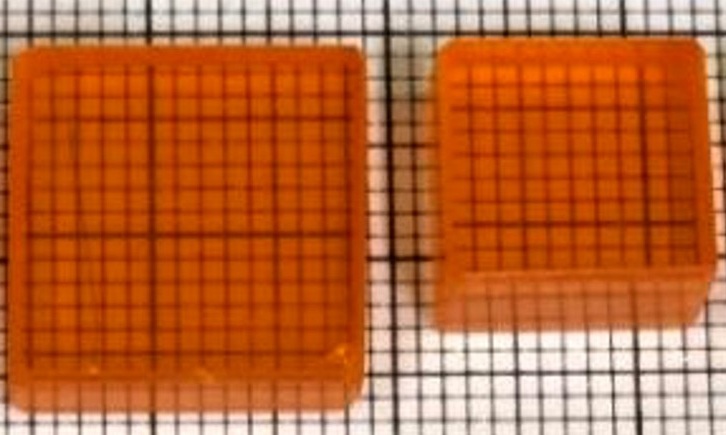
New Camera Sees Inside Human Body for Enhanced Scanning and Diagnosis
Nuclear medicine scans like single-photon emission computed tomography (SPECT) allow doctors to observe heart function, track blood flow, and detect hidden diseases. However, current detectors are either... Read more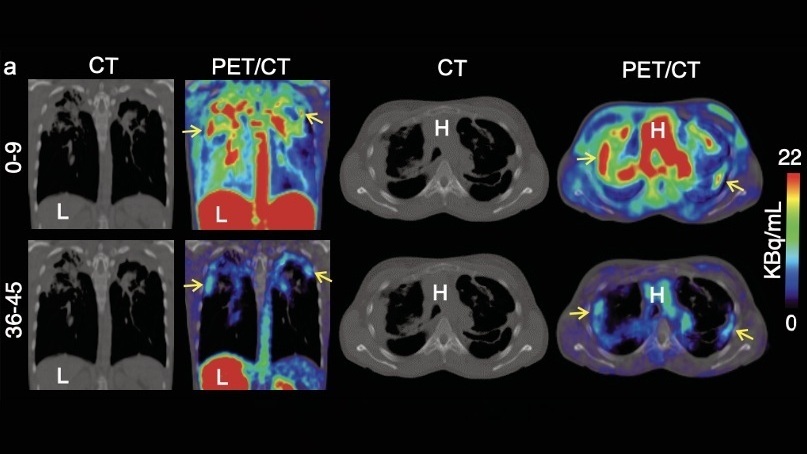
Novel Bacteria-Specific PET Imaging Approach Detects Hard-To-Diagnose Lung Infections
Mycobacteroides abscessus is a rapidly growing mycobacteria that primarily affects immunocompromised patients and those with underlying lung diseases, such as cystic fibrosis or chronic obstructive pulmonary... Read moreImaging IT
view channel
New Google Cloud Medical Imaging Suite Makes Imaging Healthcare Data More Accessible
Medical imaging is a critical tool used to diagnose patients, and there are billions of medical images scanned globally each year. Imaging data accounts for about 90% of all healthcare data1 and, until... Read more
Global AI in Medical Diagnostics Market to Be Driven by Demand for Image Recognition in Radiology
The global artificial intelligence (AI) in medical diagnostics market is expanding with early disease detection being one of its key applications and image recognition becoming a compelling consumer proposition... Read moreIndustry News
view channel
GE HealthCare and NVIDIA Collaboration to Reimagine Diagnostic Imaging
GE HealthCare (Chicago, IL, USA) has entered into a collaboration with NVIDIA (Santa Clara, CA, USA), expanding the existing relationship between the two companies to focus on pioneering innovation in... Read more
Patient-Specific 3D-Printed Phantoms Transform CT Imaging
New research has highlighted how anatomically precise, patient-specific 3D-printed phantoms are proving to be scalable, cost-effective, and efficient tools in the development of new CT scan algorithms... Read more
Siemens and Sectra Collaborate on Enhancing Radiology Workflows
Siemens Healthineers (Forchheim, Germany) and Sectra (Linköping, Sweden) have entered into a collaboration aimed at enhancing radiologists' diagnostic capabilities and, in turn, improving patient care... Read more












